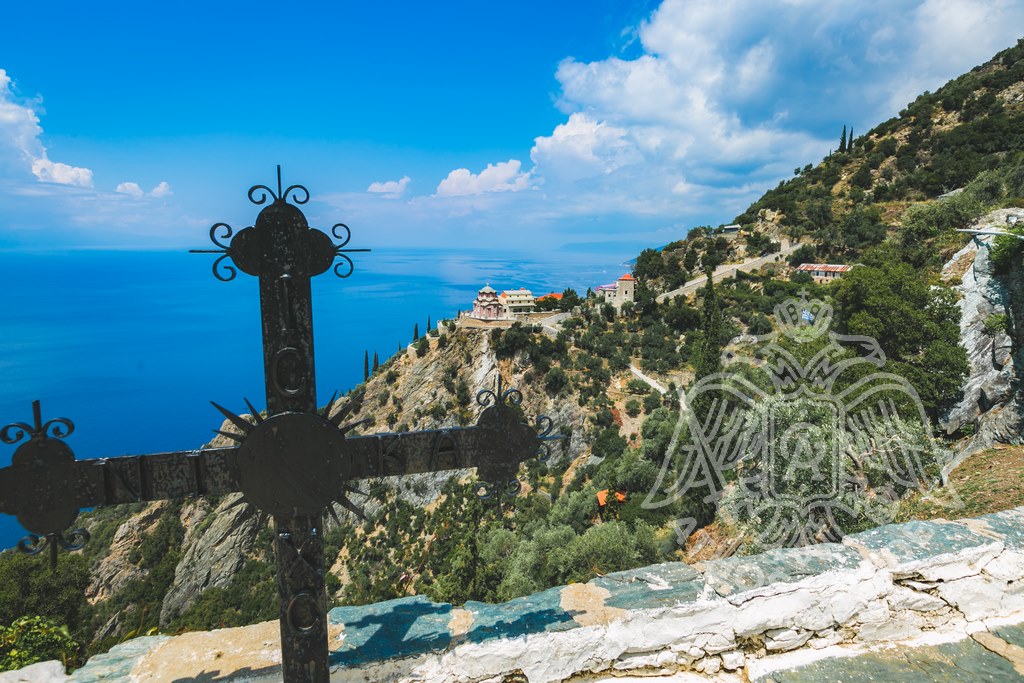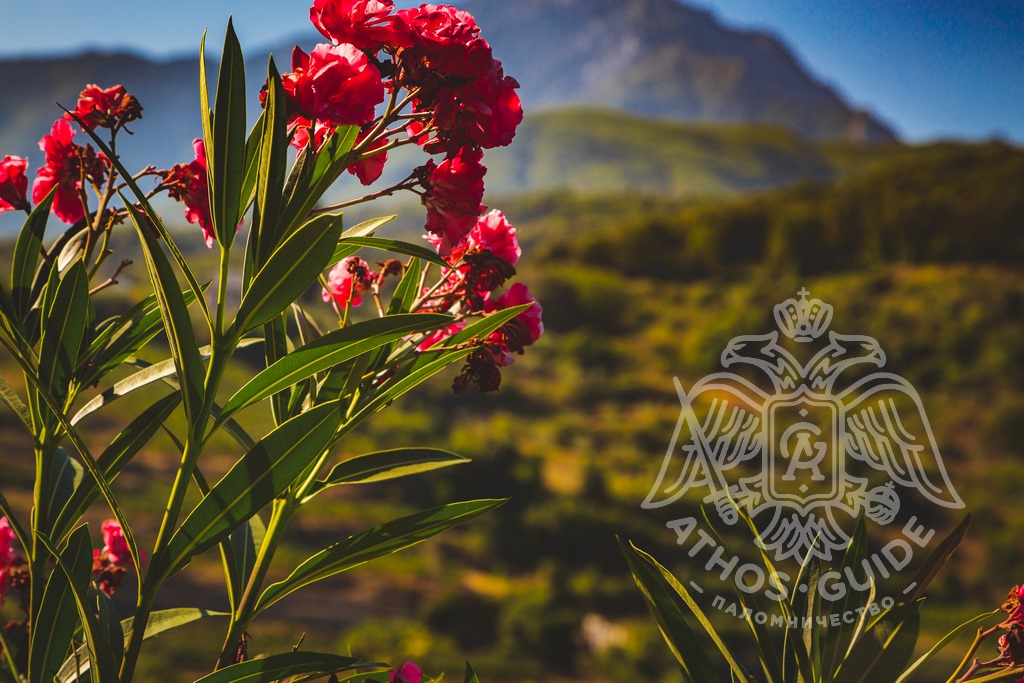
The Transfiguration of the Lord is one of the most important feasts of Orthodoxy, since the event of the Transfiguration highlights the essence and truth of the Christian doctrine. Therefore, our Church classifies it as one of the despotic feasts.
Gospel passage
 According to the Gospel passage, Jesus went up to Mount Tabor with three of His disciples, Peter, John and James. When arrived, He was transformed in front of them, manifesting the uncreated light of His divinity through His human nature. At the same time, the prophets Moses and Elijah appeared and began to converse with Him. Then Peter, being astonished at the event, expressed his desire to remain on the mountain, saying that he could make three tents, so that Christ and the two prophets could sleep at night. Immediately a cloud of light covered the atmosphere, and the voice of God was heard from above:
According to the Gospel passage, Jesus went up to Mount Tabor with three of His disciples, Peter, John and James. When arrived, He was transformed in front of them, manifesting the uncreated light of His divinity through His human nature. At the same time, the prophets Moses and Elijah appeared and began to converse with Him. Then Peter, being astonished at the event, expressed his desire to remain on the mountain, saying that he could make three tents, so that Christ and the two prophets could sleep at night. Immediately a cloud of light covered the atmosphere, and the voice of God was heard from above:
“This is my Son, whom I love; with him I am well pleased. Listen to him!”
The disciples were dazzled by the light, trembled before the power of the Deity, and fell with their faces down to the ground. Jesus approached them and told them to rise without fear. Facing the Master, they saw their teacher again. Returning from Mount Tabor, Jesus said to them:
“Don’t tell anyone what you have seen, until the Son of Man has been raised from the dead.”
Theological interpretation
The Gospel passage on the Transfiguration is of particular interest. Starting with the prophets, we will refer to the significance of their presence, the reaction of the disciples, the function of the uncreated light, and the interpretation of the very concept of transfiguration.
The presence of the two prophets, Moses and Elijah, has an eschatological and messianic character. The truth of Jesus Christ as Messiah is brought out. The prophecies of the Old Testament are confirmed, and the Saviour who will raise people from sin, is reflected in him. Furthermore, according to the scriptures, the two prophets will attend Jesus at the Second Coming. Their appearance at the transfiguration is therefore, among other things, an eschatological symbolism and an indirect reference to the day of judgment.
As far as Jesus' disciples are concerned, only Peter, James and John are present at the event. Initially, the presence of three of the disciples fulfills, according to scholars, the word of Moses:
“A matter must be established by the testimony of two or three witnesses.”
Furthermore, each of the disciples has a symbolic meaning. Peter symbolizes the virtue of faith, as he was the first to confess his faith in Jesus Christ as the Son of God. James symbolizes hope, as he was one of the first martyrs and, in hope of life after death, he submitted to the torture inflicted on him by the Jews. Finally, John symbolizes love, for he was present at the Passion of Christ, remaining under the Cross and mourning for his Teacher.
Peter's desire to remain on Mount Tabor is of particular interest. As scholars note, Peter wanted to make three tents to keep the Christ and the two prophets close to him. According to the theological interpretations that have been attributed to this event, his proposal highlights his love and amazement before the power of the Deity, as well as his sacrificial inclination, since he was not interested in his own comfort but wanted to create a safe place for his teacher to spend the night. On the other hand, it still brings out his selfishness and his desire not to share the radiance of Christ, but, forgetting the world, to remain blessed under His uncreated light.
As for the light that blinded the disciples and filled their hearts, patristic theology points out that it was not the light we know through our empirical reality. It was rather an "uncreated" light, that is, a divine cloud that transcended matter. Basil the Great describes it as "the purest," "sincere" and "immaterial". It constitutes a radiance of spiritual quality that emanates from the divine nature of Christ.
Finally, with regard to the term "transformation," it does not denote a total conversion of Jesus' substance. Being one of the persons of the unitive and indivisible Trinity, Christ contains divinity. The transformation concerns the event of the revelation of His unified and complete hypostasis to the disciples. What is transformed, therefore, is His appearance, the manner in which He reveals himself to humanity and not His quality. Furthermore, according to another interpretation, the transformation concerned primarily the disciples, who became able, through their mortality, their material senses and their vision, to behold the uncreated light of God without being burned by it.
Iconographic type of the Transfiguration
According to the iconography, Jesus is depicted in the center of the icon, above the elevated terrain of Mount Tabor. He appears to be shining with the light of divinity, while the three disciples, Peter, James and John, appear dazzled. Indeed, kneeling and keeping their faces down to the ground, they express in their posture the awe and reverence they felt before the divine glory of the Savior. Next to Christ, prophets Moses and Elijah are depicted, symbolizing the Law and the Prophecies respectively.
Customs and traditions
The Feast of the Transfiguration is associated with rich folklore traditions, particularly related to rural life in the countryside. In many regions of Greece, the Metamorphosis of the Savior marks the beginning of the harvest. During the festival, it is used by the believers to bring grapes to the church so that they can be blessed by the priest. The blessing of the first fruits is an expression of gratitude to God for making the land fruitful and providing us with food. After the service and celebration, believers share the grapes among themselves, thus expressing brotherhood and solidarity.
The Feast of the Transfiguration of the Savior in Mount Athos
In Holy Mount Athos, this day holds a special place. It is celebrated with great splendor and spiritual devotion. Monks and pilgrims gather to celebrate the divine nature of Jesus Christ and the revelation of His glory. The Transfiguration is a spiritual experience that renews the faith and devotion of believers.
The greatest celebration is held at the Holy Monastery of Great Lavra; it is the oldest and one of the most important monasteries of Athos, where the church of the Transfiguration of the Savior is located. The celebration begins on the eve, with the Vespers chanted with devotion and magnificence. A Vigil then follows, during which the monks and pilgrims pray asking for the blessing and light of Christ the Savior. The next day, the solemn Divine Liturgy is celebrated.
 As the Feast of the Transfiguration is connected with the blessing of the first fruits of the earth, the monks bring grapes from their vineyards in order to bless them. In this way, they express their gratitude for the fertility of the land and the divine providence. After the blessing, the fruit is distributed to the believers as a symbol of fraternity and communal solidarity.
As the Feast of the Transfiguration is connected with the blessing of the first fruits of the earth, the monks bring grapes from their vineyards in order to bless them. In this way, they express their gratitude for the fertility of the land and the divine providence. After the blessing, the fruit is distributed to the believers as a symbol of fraternity and communal solidarity.
Conclusion
The Feast of the Transfiguration reminds us of our call to spiritual transformation and encourages us to seek theosis, participation in the divine nature through faith and devotion to Christ. It is a special moment of spiritual uplift and praise of Christ the Savior.
Apolytikion
“You were transfigured on the Mount, Christ God revealing Your glory to Your disciples, insofar as they could comprehend. Illuminate us sinners also with Your everlasting light, through the intercessions of the Theotokos. Giver of light, glory to You.”
